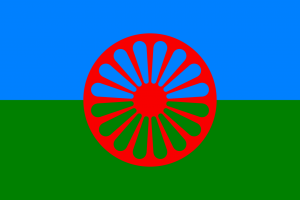The Origin of the Romani Language
By Sara-Claire Jordan
 The Romani people are an extremely interesting group, who are found mostly throughout Europe, but also in the Americas. You may know them as “gypsies”, a term that is a bit out of date now. The word “gypsy” originally comes from the Greek word for “egyptian”, which exposes the confusion surrounding the origins of this group of people. It was first used in 1514, when it was believed that “gypsies” came from Egypt originally. Now we know otherwise, but the term has stuck for many people.
The Romani people are an extremely interesting group, who are found mostly throughout Europe, but also in the Americas. You may know them as “gypsies”, a term that is a bit out of date now. The word “gypsy” originally comes from the Greek word for “egyptian”, which exposes the confusion surrounding the origins of this group of people. It was first used in 1514, when it was believed that “gypsies” came from Egypt originally. Now we know otherwise, but the term has stuck for many people.
Though in most literature on the subject, you will find that the believed origins of the Romani people is northern India, but new linguistic research has shown that the earliest iteration of the Romani language was actually spoken in central India. This also means that the Romani people must have come originally from this area, though there are a few theories out there about who they were and why they left India and ended up mostly in Europe.
One theory about the Romani people is that they originally were members of the Doms caste in India. Those who belonged to the Doms caste are traditionally musicians, basket-makers, metal workers, jugglers and more. Even today, they are nomadic if it proves commercially beneficial to them, which adds to the body of evidence that the Romani people probably were of the Doms caste originally. Many linguists back up these claims with examples of how similar the Romani language is to Hindi and other Indo-Aryan languages. It has roots in Sanskrit, just like most of the other languages spoken in India today.
As members of the Doms caste, the not yet Romani people may have migrated to northern India and then eventually to the Balkans region during the Byzantine Empire. Once that empire began to decline, groups of Romani immigrated to the rest of Europe. Here, with the influence of the major languages where they settled, the Romani language began to split into different branches of dialects. For instance, the Romani spoken by Romani people in Germany was influenced by German, in Turkey by Turkish, etc. Some languages known as Para-Romani are the result of combining Romani with other languages. Because of the influences of European (and other) languages, the Romani language has actually become more of a language family than just one language.
However, all of this is theoretical, though supported by linguistic evidence. There is no written record of the early Romani language, so all that linguists and researchers can do is look at the written records of Indo-Aryan languages and compare it to what has been gathered of the Romani language in terms of grammar, syntax, vocabulary, and more. Most findings conclude that the theory that the Romani language and people came from central India is probably accurate, and supports the idea that they migrated to the Balkans and then spread throughout Europe. Nevertheless, we may just have to accept the fact that the origins of the Romani language and the people who speak it are a little bit murky, and probably always will be.
For an overview of our translation expertise, visit our editing service page.
Category: Foreign Language








